The Matsu Islands region has a subtropical maritime climate, influenced by the monsoon and ocean currents and its geographic location. There are four distinct seasons: winters are cold and wet, spring and summer are foggy, while fall’s weather is generally stable. Matsu’s latitudinal position is slightly north of northern Taiwan (approximately one degree), but due to its proximity to the continental climate of mainland China, the temperature is lower than Taipei’s, at an annual average of 18.6° C (65.48° F), with the temperature varying greatly between day and night. The air temperature is coldest between December and February, with the average temperature for the month of February around 10° C (50° F), and highest in July and August, averaging approximately 29° (84.2° F).
The Matsu Islands are located northwest of Taiwan, in the Taiwan Strait, and are administered by Lianjiang County, under which are Nangan Township, Beigan Township, Dongyin Township, and Dongju township. The islands include Nangan, Beigan, Dongju, XIju, Dongyin, Liangdao, Gaodeng, Daqiu, Xiaoqiu, and numerous uninhabited islets, comprising a land formation that is narrow east to west and long north to Most of the Matsu Islands are mainly made of granite, with the effects of millions of years of sea and wind erosion having formed a wide variety of terrain and scenery; precipitous cliff faces, ocean erosion ditches, distinctly tiered joints, arches bridges, columns, caves, and other formations caused by the pounding of the waves can be seen all over the Matsu Islands. In addition to coastlines formed by towering cliffs, there are also beautiful, flat sandy beaches such as Beigan’s Tanghoudao Beach (nicknamed “Sugar-Sand Beach”), Wusha Beach and Banli Beach, and Juguang’s Fuzheng and Kunqiu Beach. Xiju’s Caipu-ao, with its unusual rock formations, and Xiyin’s Qingshui-ao, with its clear waters, are representative of Matsu’s shingle beaches.
-
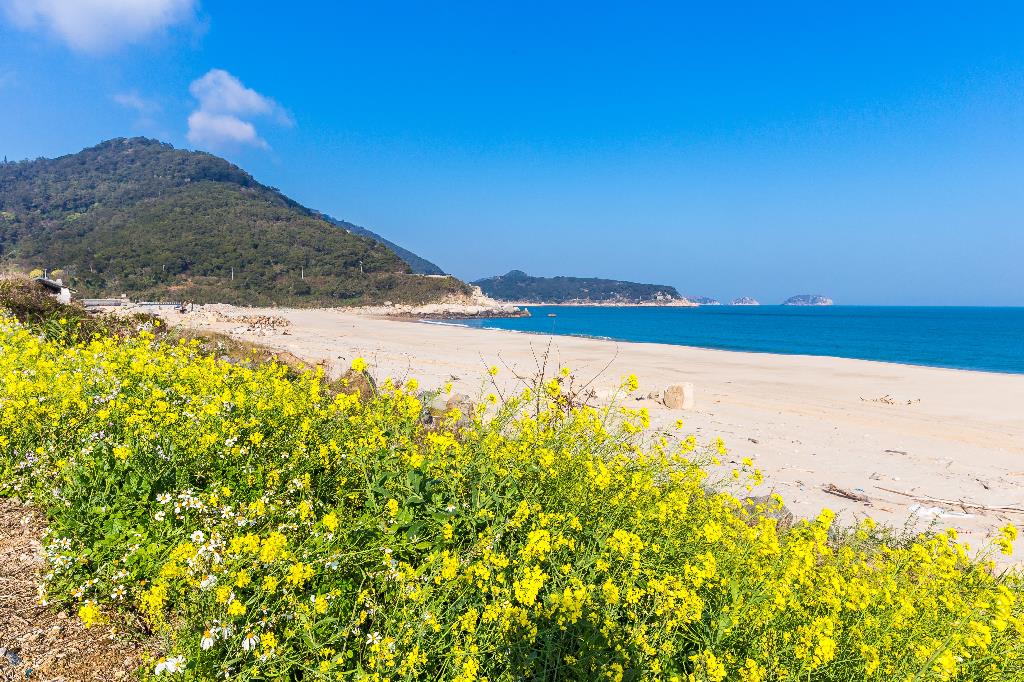 Banli Beach
Banli Beach
-
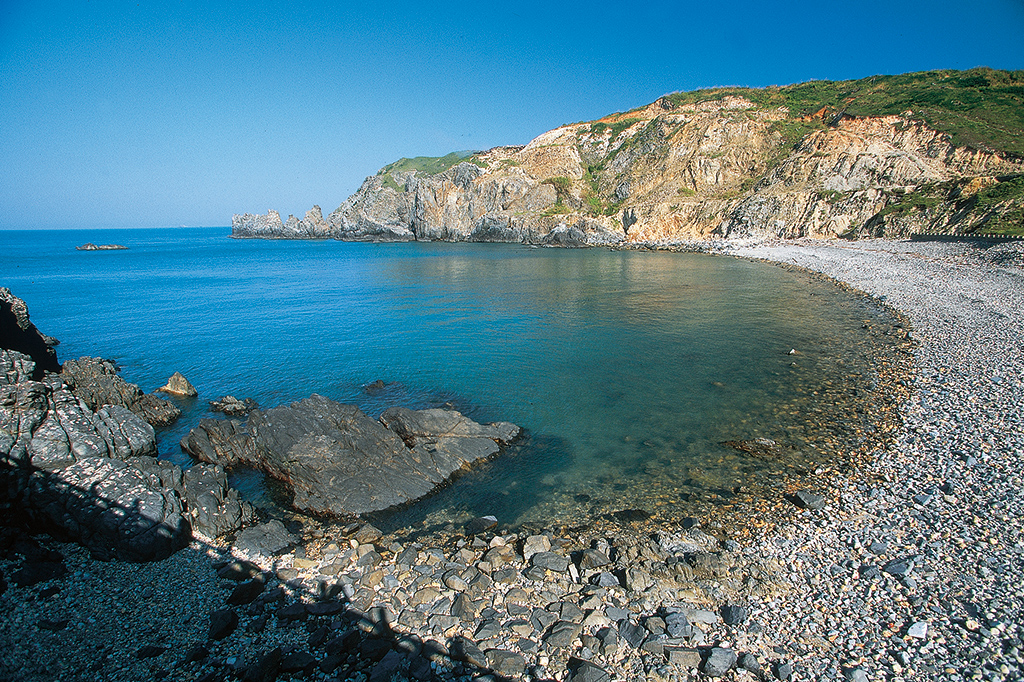 Caipuao
Caipuao
Because of its geographic proximity to mainland China, the Matsu Islands have both island and continental characteristics, which have nurtured many distinctive species of flora and fauna, such as the white rabbit’s foot fern (Humata tyermanni) and the East Asian autumn fern (Dryopteris fuscipes) seen all over the islands. Due to the particular characteristics of the islands, endemic species have gradually evolved, such as the Matsu Lycoris, the Matsu Purple Sandalwood, the Matsu Wild Lily, and many other species named for Matsu.
Migratory birds flock to Matsu every year, nesting and mating on the uninhabited islands and reefs. In May 1991, the Mazu Islands Tern Conservation Area was established, containing Dongyin Township's Shuangzi Reef, Beigan Township's Sanlian Island, Central Island, Tiejian Island, Baimiao, and Jinyu, Nangan Township’s Liuquan Reef, and Juguang Township’s Sheshan. The main species protected include the Bridled Tern(Sterna anaethetus L36cm), Black-naped Tern(Sterna sumatrana L30cm), Roseate Tern.(Sterna dougallii L31cm), Chinese Crested Tern. (Sterna bernsteini L40cm), Japanese Gull.(Larus crassirostris), Pacific Reef Egret. (Egretta sacra.), and White-rumped Swift.( Apus pacificus)
-
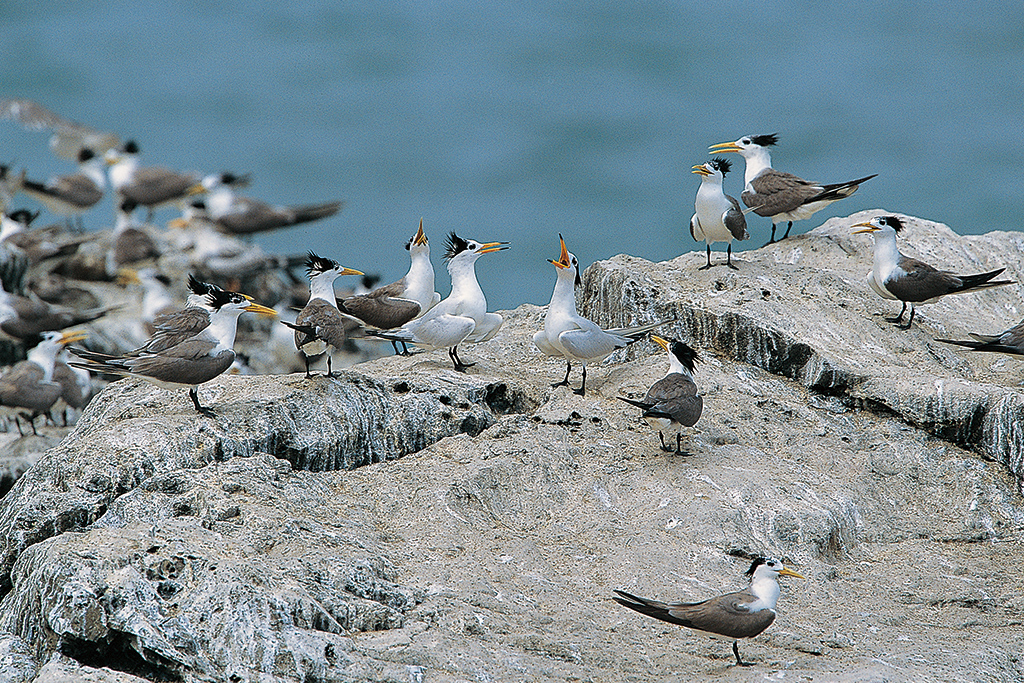 Chinese Crested Tern
Chinese Crested Tern
-
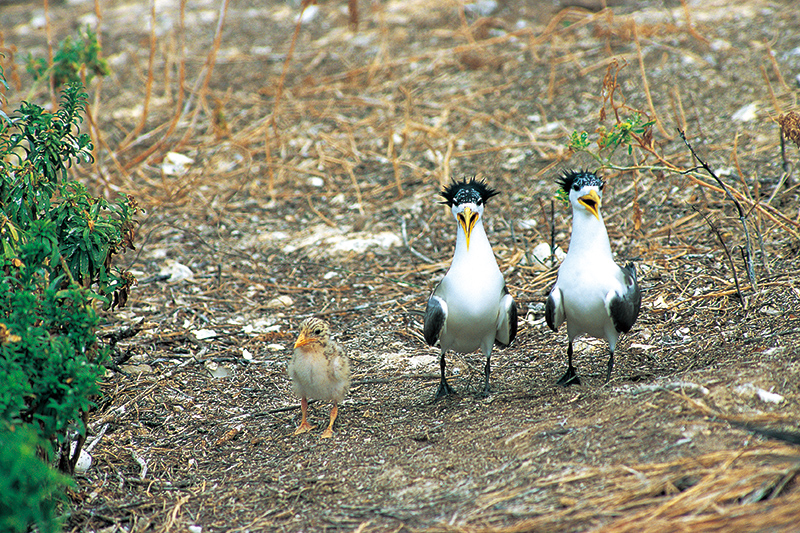 Greater Crested Tern
Greater Crested Tern
-
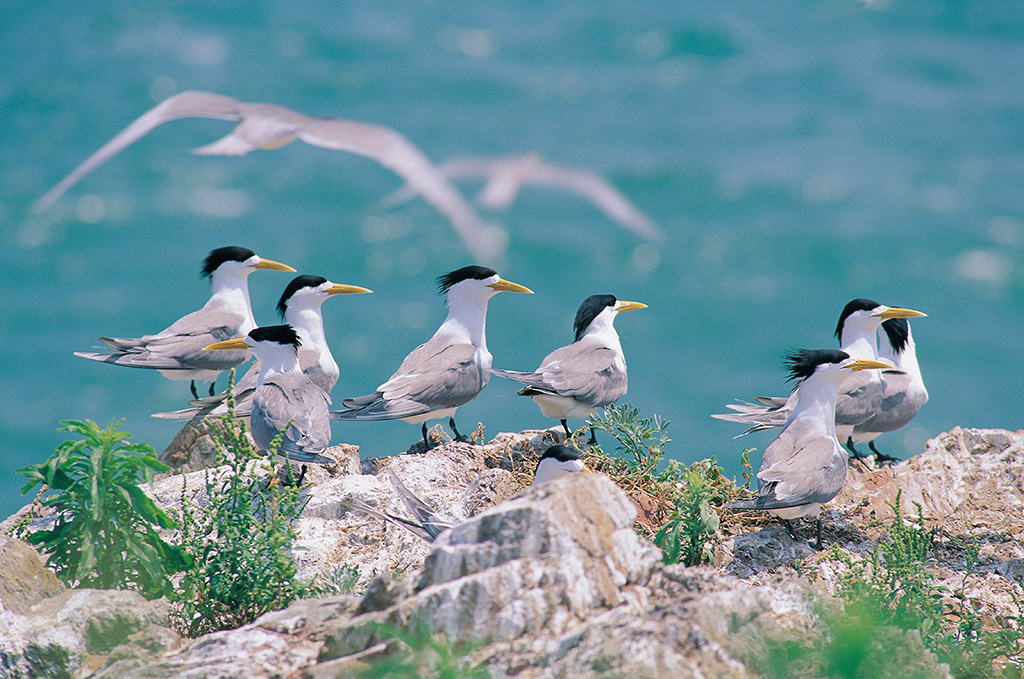 Greater Crested Tern
Greater Crested Tern
-
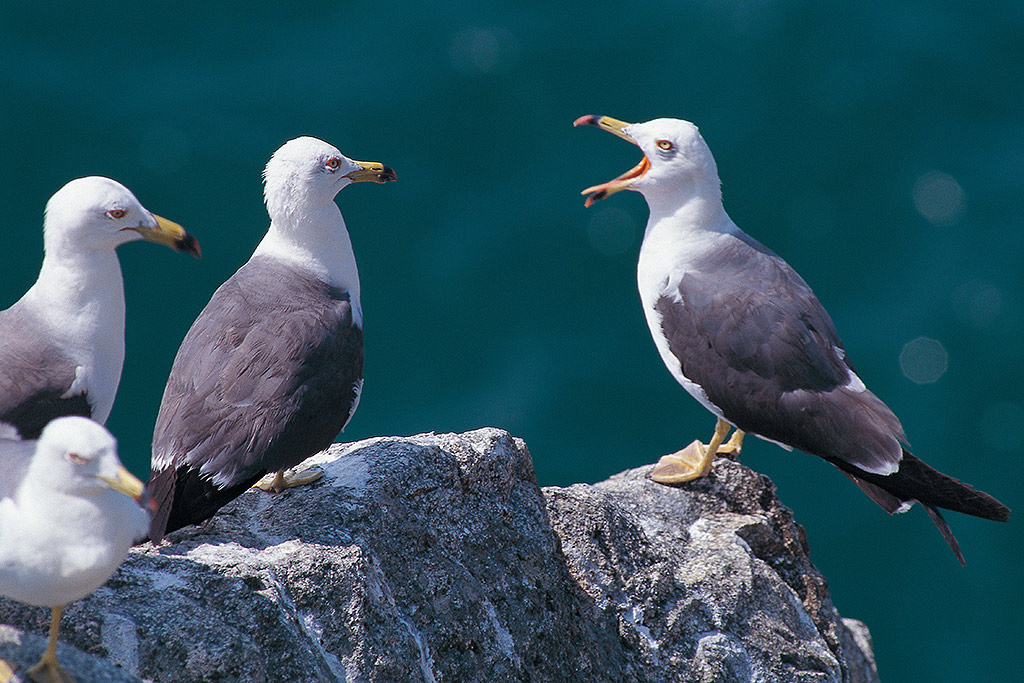 Black-tailed Gull
Black-tailed Gull